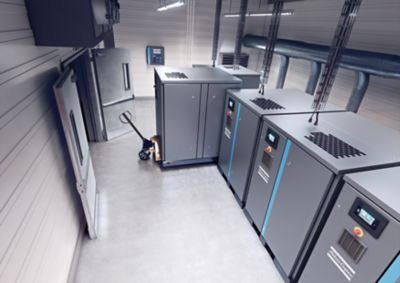The first step towards compressed air efficiency takes just 10 minutes - so, why not get started?
In my last blog I questioned if UK manufacturers could be missing out on major opportunities to save energy by overlooking the potential of their compressed air systems. One barrier is the perception that assessing the efficiency of an air compressor network is disruptive and time consuming. The reality is far from it, and below I argue that, when approached correctly, the process can be efficient, fast and hassle-free.
Reading time: 4 minutes (600 words)
Indeed, when conducted responsibly, compressed air energy audits can quickly flag-up no-obligation opportunities for improvements and energy savings that companies can either implement themselves or work with their partners to realise. This is particularly pertinent for companies seeking to implement an energy management system while working towards achieving ISO50001. There’s also a strong case for companies that need to comply with Phase 2 of ESOS, which requires participating companies to conduct audits to identify cost-effective energy-efficiency opportunities. As air compressors typically consume between 10-12% of a factory’s electricity, and sometimes up to 30%, the potential for realising energy savings by conducting a compressed air energy audit shouldn’t be overlooked.
Energy assessment and recommendations through data logging
- Award winning magazine printing company Buxton Press participated in an iiTrak system energy audit that indicated the level of air leakage from its existing pipework was high. As a result, the company opted to install a new ring main and 75kW VSD compressor with ancillaries. This is calculated to result in an annual carbon reduction of approximately 48 tonnes of CO2, along with close to £7,500 per annum savings in compressed air energy costs.
- Kingsmoor Packaging, a privately-owned family business based in Somerton, Somerset, agreed to undergo an iiTrak survey to monitor its air demands during one week. The outcomes of the assessment resulted in a change from a 110kW to a 90kW VSD compressor, reducing the operating pressure of the installation and saving in the region of £47,000 per year.

About the author
 Stef Lievens is a Belgian citizen, with a Master of Science in Mechanical Engineering and Business Administration from the University of Leuven, Belgium. He and his sales team have a customer-centric focus on offering reliable and cost-effective compressed air and industrial gas solutions that have a short payback. They seek to raise awareness of complementary technologies that offer improved productivity; such as quality air ancillaries, energy recovery systems, remote monitoring programs and real-time control and management software.
Stef Lievens is a Belgian citizen, with a Master of Science in Mechanical Engineering and Business Administration from the University of Leuven, Belgium. He and his sales team have a customer-centric focus on offering reliable and cost-effective compressed air and industrial gas solutions that have a short payback. They seek to raise awareness of complementary technologies that offer improved productivity; such as quality air ancillaries, energy recovery systems, remote monitoring programs and real-time control and management software.

